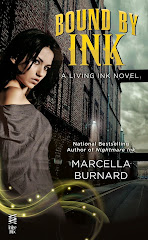Steam Con IV is over and we're all trapped firmly in the mundane world once more. However. For a few brief days, the Hyatt in Bellevue was the site of an in invasion of hideous (but polite!) Victorian monsters and those that hunt the diabolical creatures. Enough chatter. On to the photos! Behold, Baba Yaga! And a well dressed mummy - note her mummified companion at her side.


 Dr. Jekyll and the nortorious creature, Hyde. A very small dragon invaded the mercantile at one point causing a stampede as the shoppers were lured in by the creature's fiendish cuteness.
Dr. Jekyll and the nortorious creature, Hyde. A very small dragon invaded the mercantile at one point causing a stampede as the shoppers were lured in by the creature's fiendish cuteness.
Medusa and the brave Perseus (AKA Mike and Casey Spence) Also, a glimpse of a pair of monster hunters - loaded for whatever danger might wander into their sites.
 This man is on stilts. In costume. Playing a bagpipe. The blurry is invalid.
This man is on stilts. In costume. Playing a bagpipe. The blurry is invalid.
Below, we have the Vampire Rhiannon and the lovely Lady Anna K. Sunnamun, explorer, late of Egypt. (AKA Rhiannon and Melissa Thornley)

And here, we have the entire crew. From left to right: Emily Olesin, Casey Spence (Medusa), in the pith helmet Mike Spence (Perseus), in front Keith Burnard, Rhiannon Thornley, Melissa Thornley, Melissa Denny and Alden Denny.
I was a Victorian Black Widow. Sadly for a number of people, they mistook me for the superhero variety rather than the arachnid and thus venomous type. The costume wasn't elaborate, but the tragedy is that I don't sew and the great bulk of my creative impulse appears to be reserved for writing stories. It took a very long time for me to complete the pattern I'd chosen. We won't talk about the number of seams I had to rip out because I'd misunderstood a set of instructions. Nor will we discuss the blood that I may have shed from sticking myself with pins during the constuction phase.
From fabric, to half sewn objects.


To completed outfit (without accesories) to the con where the vampire and I were caught conferring about the relative merits of poisoned bites.
Join us next year for SteamCon V. The theme is Around the World. Costumes are optional, thought clothing is not, but costumes are a good portion of the fun.










